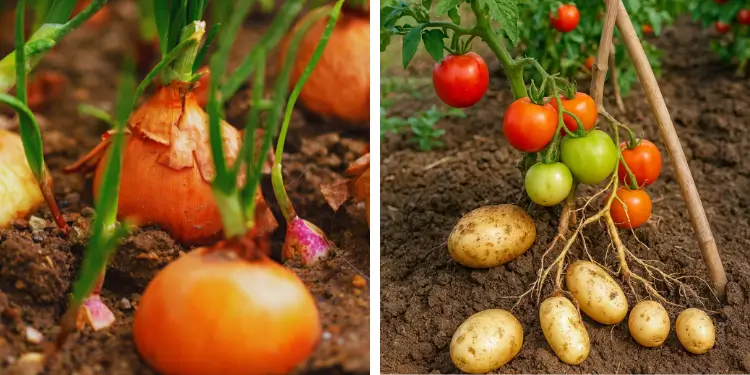Successful gardening is about more than simply planting seeds, watering, and waiting for the harvest.
The real secret to abundant yields and healthy plants lies beneath the surface – in the complex relationships plants form with one another.
Some crops thrive side by side, sharing nutrients, repelling pests, and even improving each other’s flavor.
Others, however, compete fiercely for resources, inhibit growth, or attract the same diseases and pests.
Why Plant Compatibility Matters
Plants are not passive life forms – they actively interact with their environment and neighbors.
Some send out chemical signals through their roots, some excrete compounds that suppress competitors, and others simply grow aggressively and rob nearby plants of sunlight, water, and nutrients.
There are three main ways incompatible plants harm each other:
1. Nutrient Competition
Some plants have very similar nutrient requirements. When planted too close together, they compete for the same resources, leaving both undernourished.
This often results in:
- Stunted growth
- Yellowing leaves (a sign of nutrient deficiency)
- Delayed or reduced harvests
- Poor root development
Heavy feeders – crops that demand lots of nitrogen, potassium, or phosphorus – should rarely share space with other heavy feeders.
2. Allelopathy (Chemical Warfare)
Certain plants release allelochemicals – natural compounds that inhibit the germination or growth of neighboring plants.
This strategy helps them outcompete rivals in the wild, but in the garden, it can stunt or even kill nearby crops.
A classic example is walnut trees, which release juglone, a compound toxic to many vegetables. But even common crops like beans, onions, and sunflowers use chemical signals that can suppress neighbors.
3. Pest and Disease Amplification
Some plants attract the same pests or are vulnerable to the same diseases. When grown together, they amplify pest populations and increase disease risk.
For example, tomatoes and potatoes belong to the nightshade family and are susceptible to similar fungal infections. Planting them side by side can spread blight quickly through your garden.
Crops You Should Never Grow Side by Side
Let’s explore the most common incompatible pairings – and why they spell trouble for your garden.
1. Tomatoes and Potatoes
TO CONTINUE READING THE ARTICLE PLEASE SEE PAGE 2
